Dec 22, 2025
Dec 22, 2025
...the Recognition of the Link Between Vision and Desire
The majority of the paintings in the nineteenth century signify women as visibly different, and the sign woman is equated with a beautiful object to-be-looked-at. In addition, at the structural, psychic level, the troubled relationship between masculine sexuality and sight was proposed. Sexuality is produced with desire, both predicated upon the patriarchal price of acquiring gender and language - the repression of the mother and the dyadic unity of mother and child.
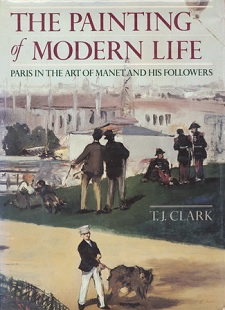 T.J. Clark in his book The Painting of Modern Life: Paris in the Art of Manet and his Followers, deals with the problematic of sexuality in bourgeois Paris and the canonical paintings are Olympia and A Bar at the Folies-Bergere by Edouard Manet. In Olympia, Manet depicts a naked white woman reclining on a bed gazing at the viewer. Her frank stare challenges the latter who is consumed with desire. Indeed, Manet forces viewers to look at the painting instead of into it, as they were accustomed to doing. In presenting this bold window of the frame, the artist compels the viewer to work at the painting - to fill out the emotional context and to create in his mind's eye the whole three-dimensional setting.
T.J. Clark in his book The Painting of Modern Life: Paris in the Art of Manet and his Followers, deals with the problematic of sexuality in bourgeois Paris and the canonical paintings are Olympia and A Bar at the Folies-Bergere by Edouard Manet. In Olympia, Manet depicts a naked white woman reclining on a bed gazing at the viewer. Her frank stare challenges the latter who is consumed with desire. Indeed, Manet forces viewers to look at the painting instead of into it, as they were accustomed to doing. In presenting this bold window of the frame, the artist compels the viewer to work at the painting - to fill out the emotional context and to create in his mind's eye the whole three-dimensional setting.
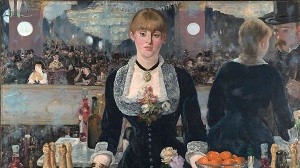 Likewise, in A Bar at the Folies-Bergere by Manet, the barmaid is engaged in unsavoury conversation with the top-hatted customer at right. The latter, in fact looks at her with desire in his eyes. The viewer, too, experiences a feeling of desire for the barmaid. As a result, in this painting, the established circuits of sexual seeing and knowing - of temptation and desire - is crossed and produce a spark of insight. Could female artist Berthe Morisot have gone to such a location to canvass the subject? Moreover, one part of the shock of the transgression effected by the painting Olympia for its first viewers was the presence of that 'brazen' but cool look from the female protagonist.
Likewise, in A Bar at the Folies-Bergere by Manet, the barmaid is engaged in unsavoury conversation with the top-hatted customer at right. The latter, in fact looks at her with desire in his eyes. The viewer, too, experiences a feeling of desire for the barmaid. As a result, in this painting, the established circuits of sexual seeing and knowing - of temptation and desire - is crossed and produce a spark of insight. Could female artist Berthe Morisot have gone to such a location to canvass the subject? Moreover, one part of the shock of the transgression effected by the painting Olympia for its first viewers was the presence of that 'brazen' but cool look from the female protagonist.
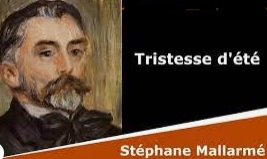 The relation between vision and desire can also be established beyond any doubt in nineteenth century literature. Stephane Mallarme's poem O si chere is a relevant example. In Tristesse d'ete, Mallarme speaks of the oblivion he hopes to find in his mistress' hair and in the makeup 'wept by her eyelids'. Another outstandingly sensuous poem of Mallarme's happens to be Apres-midi d'un faune, subtitled 'an ecologue', which is fairly clear in outline as the erotic and aesthetic musings of a classical faun on a warm southern afternoon.
The relation between vision and desire can also be established beyond any doubt in nineteenth century literature. Stephane Mallarme's poem O si chere is a relevant example. In Tristesse d'ete, Mallarme speaks of the oblivion he hopes to find in his mistress' hair and in the makeup 'wept by her eyelids'. Another outstandingly sensuous poem of Mallarme's happens to be Apres-midi d'un faune, subtitled 'an ecologue', which is fairly clear in outline as the erotic and aesthetic musings of a classical faun on a warm southern afternoon.
Arthur Rimbaud's poetry, too, contains many examples, establishing a link between the eye and desire. In Aube, Rimbaud's response to nature is very characteristic of him, and it differs very much from that of most other poets of the nineteenth century. Aube is a nature poem. However, there is something fiercely possessive and sensual in Rimbaud's love, as if it were lust rather than love that he felt. This provides an intensity to his nature poetry and a quality which is not found elsewhere.
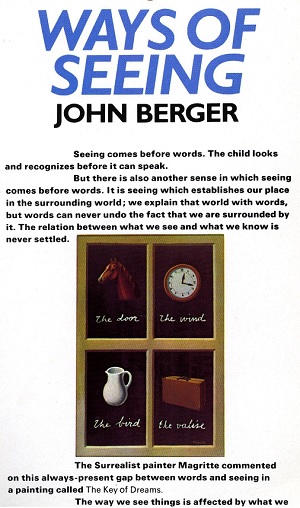 John Berger, too, recognized the link between vision and desire. In his book, Ways of Seeing, he juxtaposes the head of the Grande Odalisque by Ingres and a pin-up photograph: 'Compare the expressions of these two women...It is the expression of a woman responding with calculating charm to the man she imagines looking at her - although she doesn't know him.' However, things are far more complicated in the case of the Grande Odalisque and the impact of the painting is more layered. It is a traditional disruption of the standard and homogeneous image of woman, in a self-dissolving and self-unravelling movement of what Roland Barthes called jouissance. The undermining of a coherent image of woman is all the more striking because the painting comes so close, comes within a hair's breadth of persuasiveness. On the other hand, the great curvaceous fugue of Le Bain Turc by Ingres orchestrates temptation to the edge of decency. It is a painting about male desire, certainly: but to view it only on such terms is to limit its reference to what is obvious. It is certainly possible to conceive of the sexual impulse in this way, or to place it under the sign of abundance. But in Ingres, sexual desire is less a fulfillment than a postponement of satisfaction, and, in his painting the consummation of desire is never represented. The Valpincon Bather is less an erotic presence than an intimation of its possibility. The figure is placed in a hushed interior where silence is interrupted only by a splashing front; she turns from the spectator and covers her body with a sheet: we are unable to see her face. And this erotic absence is linked, in the most inventive passage of the painting, to the trope of displacement in tradition.
John Berger, too, recognized the link between vision and desire. In his book, Ways of Seeing, he juxtaposes the head of the Grande Odalisque by Ingres and a pin-up photograph: 'Compare the expressions of these two women...It is the expression of a woman responding with calculating charm to the man she imagines looking at her - although she doesn't know him.' However, things are far more complicated in the case of the Grande Odalisque and the impact of the painting is more layered. It is a traditional disruption of the standard and homogeneous image of woman, in a self-dissolving and self-unravelling movement of what Roland Barthes called jouissance. The undermining of a coherent image of woman is all the more striking because the painting comes so close, comes within a hair's breadth of persuasiveness. On the other hand, the great curvaceous fugue of Le Bain Turc by Ingres orchestrates temptation to the edge of decency. It is a painting about male desire, certainly: but to view it only on such terms is to limit its reference to what is obvious. It is certainly possible to conceive of the sexual impulse in this way, or to place it under the sign of abundance. But in Ingres, sexual desire is less a fulfillment than a postponement of satisfaction, and, in his painting the consummation of desire is never represented. The Valpincon Bather is less an erotic presence than an intimation of its possibility. The figure is placed in a hushed interior where silence is interrupted only by a splashing front; she turns from the spectator and covers her body with a sheet: we are unable to see her face. And this erotic absence is linked, in the most inventive passage of the painting, to the trope of displacement in tradition.
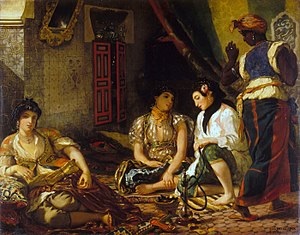 Likewise, the representation of women in Eugene Delacroix's works makes for an interesting study. His Women of Algiers is a dream image of 'Oriental' indolence. The three harem women and their servant are the ultimate embodiment and manifestation of the European masculinist interpretation of Middle Eastern and North African people as sensual and irrational. The third woman from the left holds the tube of a hookah, suggesting the timelessness of intoxication and sexual delight. The painting holds a certain voyeuristic appeal and portray women as object to be viewed and, subsequently, desired.
Likewise, the representation of women in Eugene Delacroix's works makes for an interesting study. His Women of Algiers is a dream image of 'Oriental' indolence. The three harem women and their servant are the ultimate embodiment and manifestation of the European masculinist interpretation of Middle Eastern and North African people as sensual and irrational. The third woman from the left holds the tube of a hookah, suggesting the timelessness of intoxication and sexual delight. The painting holds a certain voyeuristic appeal and portray women as object to be viewed and, subsequently, desired.
Given the above, a strong link was undoubtedly established between vision and desire in nineteenth-century art and literature in France.
Images from different sources on the Web
24-Jul-2021
More by : Attreyee Roy Chowdhury

|
Great article Congratulations Attreyee |